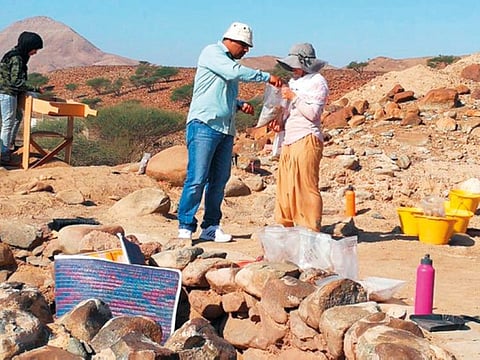Oman discovers 4,000-year-old settlement dating back to Bronze Age
Residential buildings of various sizes were found in the centre of settlement

Dubai: A large settlement dating back more than 4,000 years has been discovered in Oman’s Wilayat of Rustaq, South of Al Batinah Governorate, local media reported.
In a statement issued yesterday, Oman News Agency (ONA), said: “Archaeological excavations in the Wilayat of Rustaq revealed a large and sophisticated settlement dating back more than 4,000 years. The site includes a large number of huge buildings and burial sites.”
The settlement was discovered in the Al Tekha area, located on the edge of the Al Hajar Mountains, by the joint archaeological mission between the Archaeological Department of the College of Arts and Social Sciences at Sultan Qaboos University, and the Italian University of Pisa, under the supervision of the Ministry of Heritage and Tourism.
The results of the archaeological excavation showed that the site was inhabited for the first time in the third millennium BC during the Early Bronze Age, and it represents one of the settlements of the Umm Al Nar culture.
The site represents a very large settlement that spread over 70 hectares, which makes the site one of the largest settlements of Umm Al Nar in Oman.
Many residential buildings of various sizes were found in the centre of the settlement, in addition to a large number of burial sites spread on the western side of the settlement, the outer walls of which were elaborately built of white stones.
Several huge circular towers, some more than 40 metres in diameter, were also discovered, built of mud bricks based on huge stone foundations that spread in different areas of the settlement.
Remains of copper furnaces were found inside the settlement, which indicates that the inhabitants of that area relied heavily on copper production, smelting, and trading in their economy.
Sign up for the Daily Briefing
Get the latest news and updates straight to your inbox


